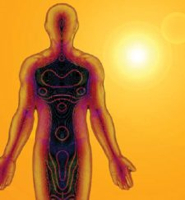Difference between revisions of "Heat"
(Created page with 'File:lighterstill.jpgright|frame ==Etymology== [http://nordan.daynal.org/wiki/index.php?title=English#ca._1100-1500_.09THE_MIDDLE_ENGLISH_PERIOD Middle ...') |
m (Text replacement - "http://" to "https://") |
||
| (One intermediate revision by the same user not shown) | |||
| Line 2: | Line 2: | ||
==Etymology== | ==Etymology== | ||
| − | [ | + | [https://nordan.daynal.org/wiki/index.php?title=English#ca._1100-1500_.09THE_MIDDLE_ENGLISH_PERIOD Middle English] heten, from [https://nordan.daynal.org/wiki/index.php?title=English#ca._600-1100.09THE_OLD_ENGLISH.2C_OR_ANGLO-SAXON_PERIOD Old English] hǣtan; akin to Old English hāt hot |
| − | *Date: before [ | + | *Date: before [https://en.wikipedia.org/wiki/12th_Century 12th century] |
==Definitions== | ==Definitions== | ||
:intransitive verb | :intransitive verb | ||
| Line 12: | Line 12: | ||
*2 : excite | *2 : excite | ||
==Description== | ==Description== | ||
| − | In [[physics]] and [ | + | In [[physics]] and [https://en.wikipedia.org/wiki/Thermodynamics thermodynamics], '''heat''' is the [[process]] of [[energy]] transfer from one [[body]] or [[system]] due to thermal contact, which in turn is defined as an energy transfer to a body in any other way than due to [[work]] performed on the body.[1] |
| − | When an infinitesimal amount of heat δQ is transferred to a body in thermal equilibrium at [ | + | When an infinitesimal amount of heat δQ is transferred to a body in thermal equilibrium at [https://en.wikipedia.org/wiki/Thermodynamic_temperature absolute temperature] T in a reversible way, then it is given by the [[quantity]] TdS, where S is the [https://en.wikipedia.org/wiki/Entropy entropy] of the body. |
| − | A related term is [ | + | A related term is [https://en.wikipedia.org/wiki/Thermal_energy thermal energy], loosely defined as the energy of a body that increases with its temperature. Heat is also loosely referred to as thermal energy, although many definitions require this thermal energy to actually be in the [[process]] of [[Motion|movement]] between one body and another to be technically called heat (otherwise, many sources prefer to continue to refer to the [[static]] [[quantity]] as "thermal energy"). Heat is also known as "Energy". |
| − | Energy transfer by heat can occur between objects by [ | + | Energy transfer by heat can occur between objects by [https://en.wikipedia.org/wiki/Thermal_radiation radiation], [https://en.wikipedia.org/wiki/Heat_conduction conduction] and [https://en.wikipedia.org/wiki/Convection convection]. Temperature is used as a [[measure]] of the internal energy or [https://en.wikipedia.org/wiki/Enthalpy enthalpy], that is the level of elementary [[motion]] giving rise to heat transfer. Energy can only be transferred by heat between objects - or areas within an object - with different temperatures (as given by the [https://en.wikipedia.org/wiki/Zeroth_law_of_thermodynamics zeroth law of thermodynamics]). This transfer happens [[spontaneously]] only in the direction of the colder body (as per the [https://en.wikipedia.org/wiki/Second_law_of_thermodynamics second law of thermodynamics]). The transfer of energy by heat from one object to another object with an equal or higher temperature can happen only with the aid of a heat pump via [[mechanical]] [[work]].[https://en.wikipedia.org/wiki/Heat] |
== External links == | == External links == | ||
| − | *[ | + | *[https://www.foxnews.com/story/0,2933,187464,00.html Plasma heat at 2 gigakelvins] - Article about extremely high temperature generated by scientists (Foxnews.com) |
| − | *[ | + | *[https://www.cheresources.com/convection.shtml Correlations for Convective Heat Transfer] - ChE Online Resources |
| − | *[ | + | *[https://canadaconnects.ca/chemistry/10114/ An Introduction to the Quantitative Definition and Analysis of Heat written for High School Students] |
[[Category: Physics]] | [[Category: Physics]] | ||
Latest revision as of 01:17, 13 December 2020
Etymology
Middle English heten, from Old English hǣtan; akin to Old English hāt hot
- Date: before 12th century
Definitions
- intransitive verb
- 1 : to become warm or hot
- 2 : to start to spoil from heat
- transitive verb
- 1 : to make warm or hot
- 2 : excite
Description
In physics and thermodynamics, heat is the process of energy transfer from one body or system due to thermal contact, which in turn is defined as an energy transfer to a body in any other way than due to work performed on the body.[1]
When an infinitesimal amount of heat δQ is transferred to a body in thermal equilibrium at absolute temperature T in a reversible way, then it is given by the quantity TdS, where S is the entropy of the body.
A related term is thermal energy, loosely defined as the energy of a body that increases with its temperature. Heat is also loosely referred to as thermal energy, although many definitions require this thermal energy to actually be in the process of movement between one body and another to be technically called heat (otherwise, many sources prefer to continue to refer to the static quantity as "thermal energy"). Heat is also known as "Energy".
Energy transfer by heat can occur between objects by radiation, conduction and convection. Temperature is used as a measure of the internal energy or enthalpy, that is the level of elementary motion giving rise to heat transfer. Energy can only be transferred by heat between objects - or areas within an object - with different temperatures (as given by the zeroth law of thermodynamics). This transfer happens spontaneously only in the direction of the colder body (as per the second law of thermodynamics). The transfer of energy by heat from one object to another object with an equal or higher temperature can happen only with the aid of a heat pump via mechanical work.[1]
External links
- Plasma heat at 2 gigakelvins - Article about extremely high temperature generated by scientists (Foxnews.com)
- Correlations for Convective Heat Transfer - ChE Online Resources
- An Introduction to the Quantitative Definition and Analysis of Heat written for High School Students
